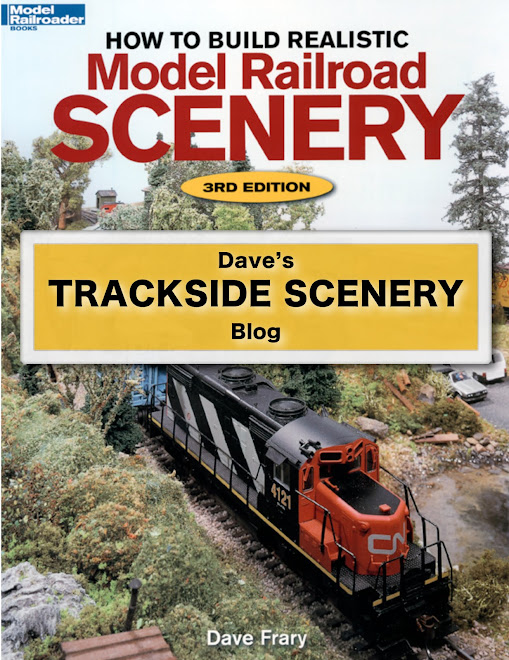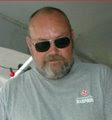I found a flat plaster casting containing some rocks and exposed dinosaur bones. It was something I bought many years ago at a train show. I must have purchased two because I added this same casting to the HO layout Bob Hayden and I built for Tokyo Disneyland back in 2000.
I took the casting and glued it to a piece of 1/2" plywood and added a length of HOn30 track in the corner. I then colored the rocks, bones and earth with acrylic paint.
My plan is to have an archaeological expedition digging-up the bones. For this I needed tents to house the expedition.
For the tent "canvas" I needed a material that is shear enough to allow lantern light, inside the tent, to shine through. Bill Banta supplies roofing paper with some of his kits. It's meant to be used as model tarpaper. It's thin and has a see-though texture. I thought it might make a good tent canvas - the old fashioned heavy type that had the rough feel of sail canvas.
From my youth I remember the canvas being gray to tan in color and always smelled of the tar-like "weatherproofing" that was painted on it. (I have flashbacks to my uncomfortable Boy Scout days trying to sleep in one of these tents while it was raining. You'd have a wet sleeping bag for a week.)
Anyway, I took Banta's roofing paper and laid it out on a towel and applied a thin wash of acrylic earth and black. I needed to paint both sides and keep brushing out the texture pattern made by the towel. After it dried I had my canvas as shown here.
I built a bunch of cardboard frames for the tent canvas to drape over. These are 8' by 8' and 4' high at the knee wall in HO scale. These are not precision models as you can see but they will be covered so they're good enough. I painted the inside of each tent frame with a light earth-colored paint.
After the paint dried I smeared the frames with thin white glue and laid the canvas in place.
I glued the cardboard frames to the canvas starting at the back. After the glue dried I cut-out backs and then draped the canvas over the sides and the top.
The last step was to glue on the front, make a slit in it, and then fold back the doors. I used a drop of glue to hold the doors back. Eventually there will be a cot and a table inside the tent.
Several of the tents will be used on the Fiddletown display as miner's lodgings.




















































